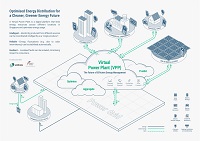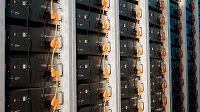For more information, please refer to:
Media Releases
31 Oct 2025
- Singapore’s energy sector is set to grow and offer strong career prospects in the next decade, according to manpower and workforce planning surveys commissioned by the Energy Market Authority (EMA). To seize these growth opportunities, EMA is collaborating with Institutes of Higher Learning (IHLs) and industry partners to develop a skilled and future-ready workforce to drive the energy transition and the sector’s transformation.
- Based on EMA’s biennial Energy Sector Manpower Survey conducted in 2024, the workforce of clean energy companies is projected to grow by 60% (~1000 workers) over the next decade. This is expected to be driven by jobs in solar, energy storage systems, and low-carbon electricity imports. The traditional power and gas workforce is also projected to grow by around 13% (800 workers) by 2034, driven by workforce growth in the electricity transmission and distribution, power generation and gas sub-sectors.
- A separate workforce planning study by EMA also revealed capabilities that will be in demand and evolve in tandem with Singapore’s energy transition. For example:
- To meet Singapore’s target of 2 GWp of installed solar by 2030, we will need engineers with expertise in solar photovoltaic system design, optimisation and asset performance skills.
- To import low-carbon electricity, a skilled workforce is required to assess the viability of import projects and manage the associated supply imports infrastructure.
- In the longer term, the power sector workforce will potentially need to be augmented with new skill sets such as to operate and maintain carbon capture and storage (CCS) components and alternative fuel supply systems (e.g. hydrogen, ammonia) should these technologies be adopted.
- The energy sector’s workforce has increased by 4% (310 workers) from 2022 to 2024, driven mostly by workforce growth in the traditional power and gas sector. Notably, engineers grew by close to 13% (180 workers) and technical officers increased by almost 7% (110 workers). These trends point to rising opportunities for graduates and professionals with relevant expertise to develop careers in the energy sector.
- Mr Puah Kok Keong, Chief Executive of Energy Market Authority, said: “Singapore’s journey to net-zero is not just a technological shift but also a driver for workforce transformation and expansion. We look forward to welcoming more youths and mid-career professionals to the energy workforce, as we step up our efforts to reduce carbon emissions from electricity generation.”
- First launched in 2022 in partnership with SkillsFuture Singapore, the Clean Energy Jobs-Skills Insight resource has also been refreshed to spotlight emerging trends, in-demand jobs and skills across the energy sector. This resource showcases how new technologies are redefining the traditional energy sector and creating fresh career opportunities, to support professionals in navigating the evolving energy landscape.
- To strengthen workforce capabilities, ensure skills relevance and draw talent to the energy sector, EMA is also working with industry partners and IHLs on training programmes.
- Professionals, including mid-career workers, and tertiary students can tap on the following programmes to upskill:
- New Technical Engineer Diploma in Electrical Engineering (Clean Energy): Launched by the Institute of Technical Education in April 2025 and recognised by EMA for applying to become a Licensed Electrical Technician.
- New continuing education and training courses offered by Singapore Polytechnic (SP) and the Singapore Institute of Technology: These address emerging skills needed for renewable energy integration and smart grids.
- There are also programmes tailored for tertiary students to spark interest in the sector and equip them with hands-on, future-ready skills. These include:
- Revised curriculum for Diploma in Electrical Engineering: Offered by Ngee Ann Polytechnic (NP), which will see students completing essential power engineering modules within the first two years of study.
- NP has also introduced a one-year Industry Immersion Internship Programme that will count towards the two-year work experience required to become a Licensed Electrical Technician.
- Internship Training Plan for tertiary students: The training plan ensures that students receive the necessary training to better prepare them to become Licensed Electrical Technicians.
- Internships and mentorships facilitated by EMA: These initiatives will connect students with industry partners to support the sector’s recruitment of talent.
- Revised curriculum for Diploma in Electrical Engineering: Offered by Ngee Ann Polytechnic (NP), which will see students completing essential power engineering modules within the first two years of study.
- The continued transformation of workforce capabilities will be key as Singapore decarbonises its energy sector. Strong industry commitment is evident, with partners taking proactive steps to strengthen the workforce.
- Keppel has grown its skilled workforce in the integrated power operations by 30% and invested over 3,650 training hours in structured training programmes tailored for next-generation energy systems. Their workforce development efforts include joint training initiatives with industry partners like Meranti Power, AI-related development and skills-based rotational assignments across the Company’s diverse critical infrastructure and plants.
- Sembcorp Solar Singapore, the first SkillsFuture Queen Bee for the Energy and Power Sector[1], is partnering SP to upgrade the capabilities of the local solar industry through training and proof-of-concepts. The goal is to train up to 100 professionals by 2027 in the use of digital system design tools and in data-driven performance analysis, as well as embark on innovative projects such as the use of AI-assisted remotely operated vehicles to inspect specific parts of floating solar farms.
- EMA will continue to work closely with IHLs and industry partners to ensure a strong manpower pipeline and a competent workforce to support the energy transition.
Refreshed Clean Energy Jobs-Skill Insight
Advancing Workforce Capability Development and Career Pathways in Energy
[1] In 2024, Sembcorp Solar Singapore was appointed by SkillsFuture Singapore as a Queen Bee for the Energy and Power Sector. Queen Bees are industry leaders who take on a leading role to champion skills development for companies, especially small and medium enterprises, within the industry.
Annex A: EMA Biennial Energy Sector Manpower Survey
Annex B: EMA Workforce Planning Study
Annex C: Background on Licensed Electrical Workers















